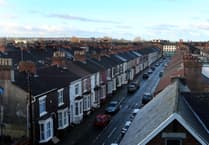THE SECOND World War anti-tank block at the Butts Bridge is in no danger, say developers.
Concerns were raised about the future of the historic concrete fixture but the firm working on site confirmed that it will be kept safe.
"We are aware of the historical importance of the anti-tank blocks," a spokesman from Knights Brown said.
Initially the plan had been to remove the block for its protection and then reinstate it once the development was complete.
However, due to its "fragile nature", it will instead remain in situ with contractors working carefully around it.
It will be "surrounded by scaffold and clad in timber for protection".
Residents may have noticed the cylindrical blocks elsewhere in town, for example at Wilsom Road, which sometimes have metal loops in the top for ease of transport.
While there was a variety of different anti-tank obstacles used in towns and cities up and down the country, they all served a very similar purpose - to make life difficult for vehicles.
Although primarily defensive deterrents, these blocks sometimes had quite active uses. For example, blocks more conical in shape were placed on armoured track routes. The idea was that vehicles would try to climb over the obstacles, exposing their less armoured under surfaces to anti-tank fire in the process.
Between 1940 and 1944 the Home Guard worked to strengthen Britain’s defences with fixtures like these placed throughout the country. Many of these measures went undocumented, many still remain and many have subsequently been demolished - though fortunately not by German invaders.




